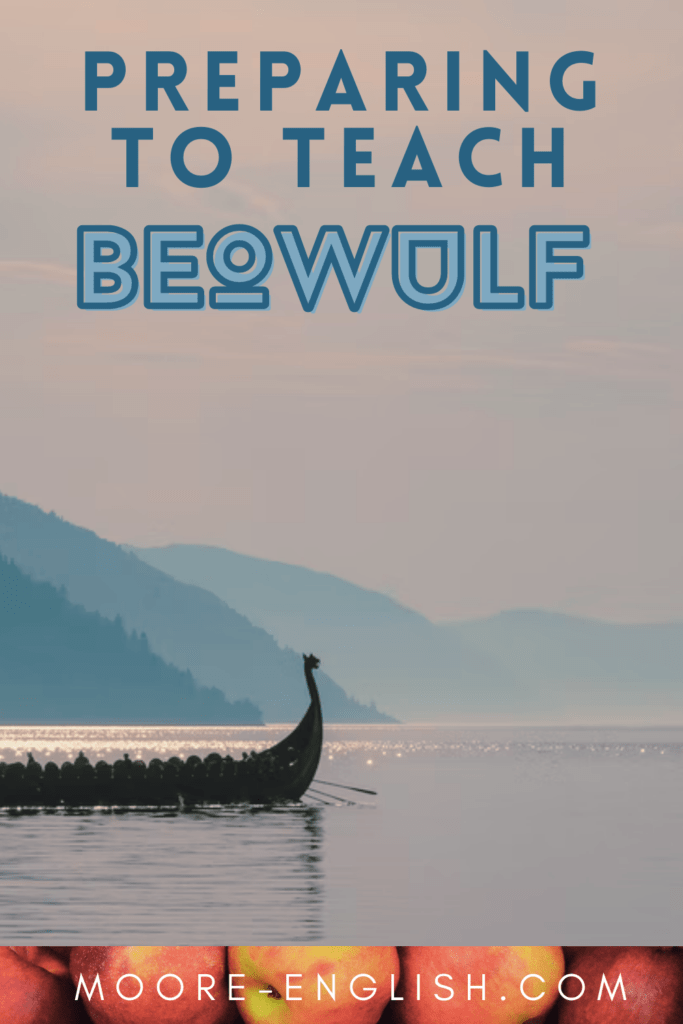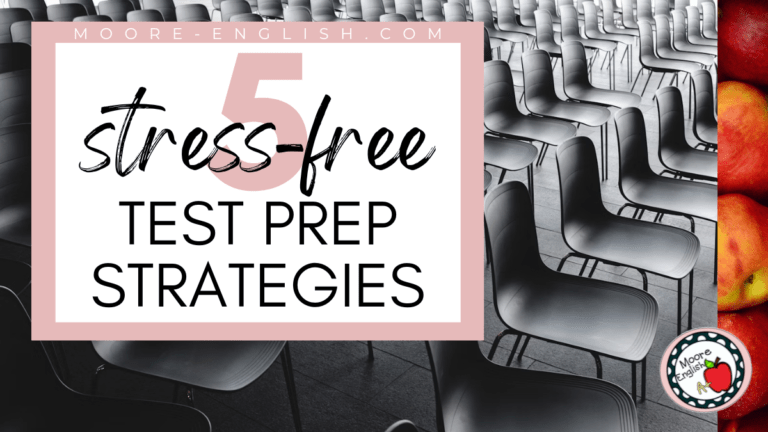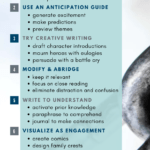My first year of teaching, I was given several sections of senior English and told that I had to teach Beowulf. Since senior English is a graduation requirement in my state, this was a daunting task.
As a new teacher, I had no idea how to make such a long, dense, and old text relevant for my students. In fact, I was so discouraged, I really railed against the text to anyone who would listen.
Ultimately, it took me a long time to figure out how to engage students in Beowulf, which is why I want to share these strategies with you. These are tried and true activities, lessons, and ideas to engage students in the study of Beowulf.
This post this post may contain affiliate links. Please read the Terms of Use.
Building Anticipation for Beowulf
My students love to talk, and they have opinions about everything big and small! For this reason, I love using anticipation guides! With anticipation guides, students have a chance to sink their teeth into some great topics while building interest and buy-in.
For Beowulf, I use this free anticipation guide. Ideally, I give students 3-5 minutes to record their initial reactions to each statement. Then, students find a partner and spend 1-2 minutes reflecting on the first statement. After 1-2 minutes, they rotate to a second partner to discuss the second statement and so on.
This has proven to be an engaging strategy for students because they get to share their opinions. It’s also a beneficial strategy because students have the chance to hear other people’s perspectives. Chatting with a constant string of new classmates also encourages students to get to know one another, building classroom community along the way.
Throughout our study of Beowulf, we may revisit the statements on the anticipation guide several times. We consider how our opinions have changed. And we consider how the statements have appeared in the text.
Writing to Understand Beowulf
Making Beowulf relevant is one of the most important parts of engaging students in the text. Because the text is so old, students sometimes struggle to appreciate how the themes continue to resonate. Beowulf’s flaws are not unfamiliar nor are the cultural values the text represents.
Throughout our study of Beowulf, I often use these journals to help students connect with the text. Since I am such a believer in bell ringers, these journals are often part of our entrance routine during our study of Beowulf. To stretch these journals, sometimes we write our journals on one day and share them with elbow partners on the second day. Then, on the third day, we discuss the topic as an entire class or through silent discussion.
As Beowulf progresses, there are lots of opportunities to try creative writing. Here are some fun creative writing opportunities:
- Write Beowulf’s introduction to Hrothgar using contemporary language
- Write and decorate Beowulf’s family or royal crest
- Practice persuasive language with a battle cry
- Mourn Beowulf’s passing with a eulogy
Visualizing as Engagement
Visualization strategies are also a great way to engage students in Beowulf. The descriptions and imagery in the text are strong, so they provide students with opportunities to show off their imaginations!
To help students understand the heroic archetype, I often have students create their own comic strip. In fact, this is the exact assignment sheet and rubric I use for this activity! Just click the link, and you can make a copy to put in your own Google Drive. My students usually have a great time with this activity, and it helps them internalize the traits of the hero’s journey!
Incorporating artwork is another great way to help students visualize the text. I have spoken so many times about how difficult it is to address CCRA.7, especially when you consider that the 9-10 standard specifically calls for different mediums.
To help my students grapple with this standard, I have collected a variety of artistic representations of key scenes from Beowulf. Sometimes I use these visuals throughout our reading of Beowulf, often in the place of bell work. Other times, I use all of them at the end and ask different student groups responsible for different images.
Food Days and Celebration
Hospitality is such an important part of Beowulf, so that’s the perfect excuse to host your own classroom feast! Since eating is such a central part of the Feast of Joy and Hrothgar Honors Beowulf, it’s easy to incorporate a classroom food day!
During your feast, students can celebrate their own achievements. This is the perfect time for students to present their comic strips. As “entertainment,” students could also use this time to make or present their battle cries, family crests, or introductions!
Differentiating Beowulf
More than anything, differentiation is key to engaging all learners in the study of Beowulf. As a new teacher, part of my frustration with Beowulf came from not understanding how to make this text accessible for all learners.
Over the years, I’ve tried so many different versions of Beowulf. I’ve tried the Gummere, the Heaney, and the Raffel. Each had its strengths, but none quite matched what I wanted or my students needed.
Now, after nearly ten years, I’ve settled on three differentiated versions of the text.
- First, I’ve heavily abridged and modified Northland Heroes (1909) by Florence Holbrook. In this version, most of the episodes are condensed to 1-3 pages, and everything is in prose. This is the perfect version for students new to English, for students who need a modification, and/or for students who are not reading at grade level. Grab it here!
- Second, for students who are ready for a more intermediate text, I’ve adapted Hero-Myths and Legends (1910) by M.I. Ebbutt. This one is not as heavily modified or abridged, and it moves back and forth between verse and prose. This is the ideal version for students who are more confident and capable readers but who are not ready for (or do not have the time for) the most advanced version. Grab it here!
- Finally, for my honors students, I have an advanced version adapted from Chauncey Brewster Tinker’s 1902 translation. While I have done some light modifying of this text, it is the most complex and includes all the digressions. It also provides students with some great opportunities for literary criticism. This may be the best version for students reading Beowulf for college credit and/or as part of advanced coursework. Grab it here.
As a new teacher, I never would have been able to juggle different versions of Beowulf. For this reason, I put together this free unit plan to give you an idea of how I pace this unit. This is the resource I wish someone had given me as a new teacher.
Beowulf Resources
All of my Beowulf resources are packaged together in the Beowulf bundle. To save you some time and money, I’ve packaged together everything you need to teach Beowulf. This includes:
- Unit Planner
- Anticipation Guide
- Visualizing Beowulf
- 10 Beowulf Journals
- Beowulf Family Trees
- Hero and Anti-hero Think Sheet
- Beowulf Background Notes and Stations
- All 16 parts of Beowulf at beginner, intermediate, and advanced levels.


Photos by Steinar Engeland, Lisa Obenauf, Anton Poznyakl Adrian Moran on Unsplash













